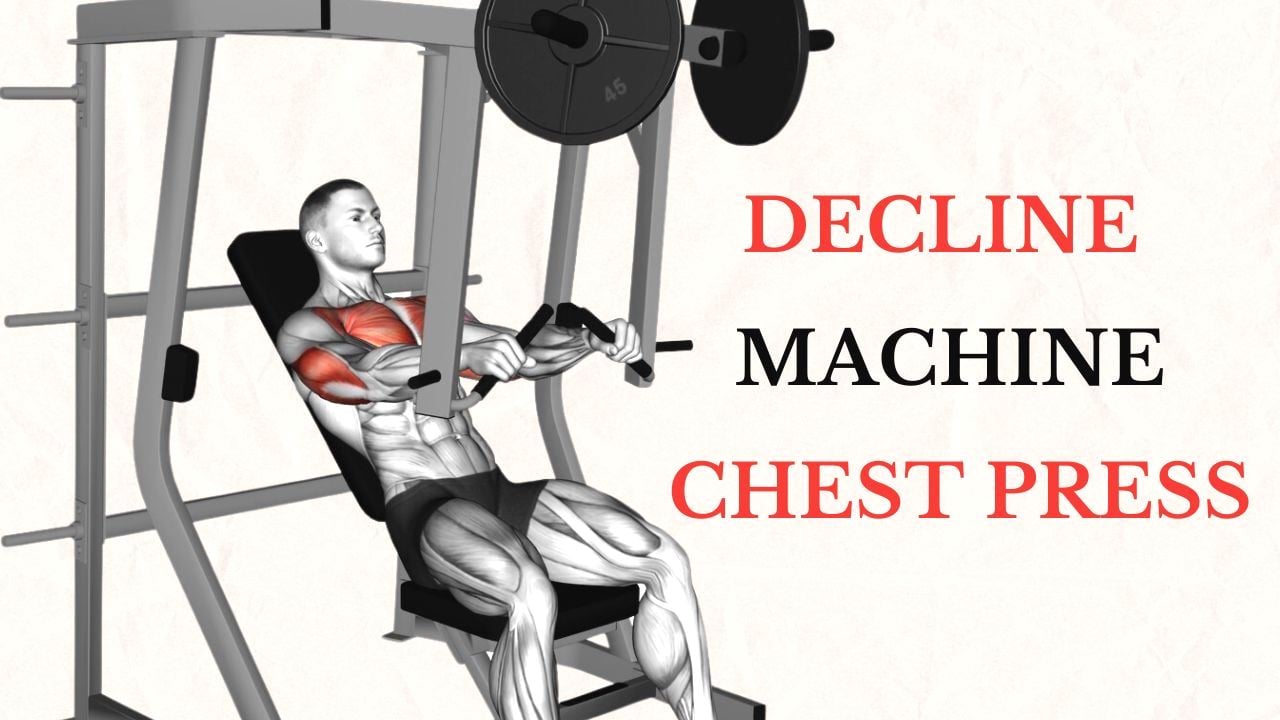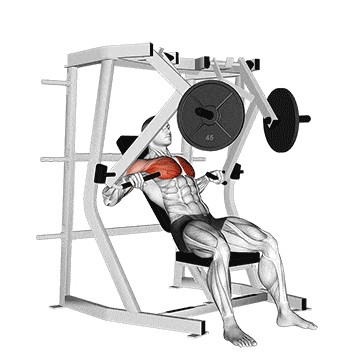The machine decline chest press is a strength training exercise that primarily targets the pectoralis major (lower chest), anterior deltoids, and triceps.
The decline machine press can be easier on the shoulder joints than the incline press because the downward angle puts less stress on the shoulder rotator cuff.
The machine’s guided motion helps you keep your form and reduce the risk of dropping weights or losing control.

Decline Machine Chest Press Muscles Worked
- The decline machine chest press primarily targets the chest muscles (pectoralis major and minor), mainly the lower chest.
- The secondary muscles that work during this are the tricep brachii and anterior deltoid.
- Several stabilizing muscles, such as the serratus anterior, rotator cuff, core, and trapezius, also work during it.
How To Do Decline Machine Chest Press
- Adjust the seat height to ensure that your upper arms are parallel to the floor and your shoulders are directly under the pivot point of the machine when you grip the handles.
- Sit upright with your back flat against the pad and your feet firmly planted on the floor.
- Grab the handles with an overhand grip, slightly wider than shoulder-width apart.
- Ensure that your wrists are in a comfortable and neutral position, not bent excessively.
- Start with your arms extended but not locked out, and your elbows slightly bent.
- Your hands should be in line with your chest, and your elbows should be slightly below shoulder level.
- Exhale and slowly lower the handles towards your lower chest in a controlled motion.
- Keep your elbows tucked in at around a 45-degree angle relative to your torso.
- Inhale and press the handles back to the starting position by straightening your arms, but don’t lock your elbows at the top.
Tips and Form
- Keep your shoulders relaxed and avoid shrugging them up towards your ears.
- Avoid arching your back to lift the weight. Maintain a flat back against the pad for proper spinal alignment.
- Keep your head aligned with your spine, not hanging forward or looking up.
- Do 8–12 repetitions per set to build muscle mass and 4–6 reps per set to build strength.
- Perform the exercise unilaterally (one side at a time) to address any muscular imbalances and activate stabilizing muscles more effectively.


Manish is a NASM-certified fitness and nutrition coach with over 10 years of experience in weight lifting and fat loss fitness coaching. He specializes in gym-based training and has a lot of knowledge about exercise, lifting technique, biomechanics, and more.
Through “Fit Life Regime,” he generously shares the insights he’s gained over a decade in the field. His goal is to equip others with the knowledge to start their own fitness journey.
